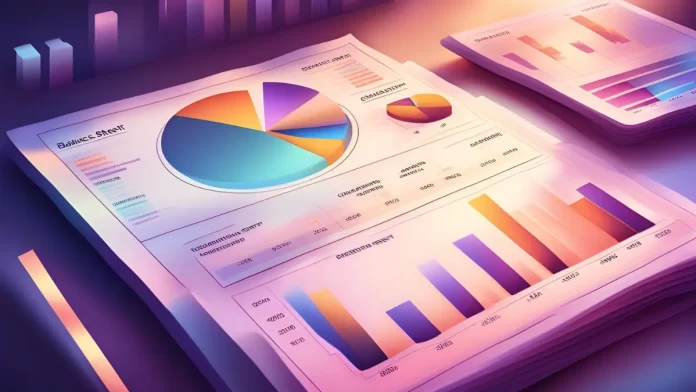In the fast-paced world of business, decision-makers need a clear, reliable snapshot of their company’s financial health—and that’s where the balance sheet shines.
A balance sheet is one of the core financial statements that gives managers and C-suite executives an in-depth view of what their company owns (assets), owes (liabilities), and its net worth (equity) at any given point in time.
Yet, for many businesses, understanding and accurately using this powerful tool can be challenging, often leading to overlooked financial risks or missed growth opportunities. In this article, we’ll break down the balance sheet’s essentials, covering its key components.
Table of Contents

Key Takeaways
|
What is a Balance Sheet?
A balance sheet is a fundamental financial statement that provides a snapshot of a company’s financial position at a specific point in time. It details the company’s assets, liabilities, and shareholders’ equity, giving stakeholders a comprehensive view of what the company owns, owes, and the value held by its shareholders.
For businesses, particularly in a B2B environment the balance sheet is essential for assessing financial health supporting informed decision-making, and demonstrating stability to partners and investors.
By understanding a company’s balance sheet managers and executives gain the insights needed to manage resources, forecast future performance, and foster growth.
How the Balance Sheet Works for Companies
It is structured to present three key components: assets, liabilities, and shareholders’ equity. For B2B companies, understanding how the balance sheet works is crucial for effective financial management and strategic decision-making.
The assets section reveals what the company owns, including cash, inventory, equipment, and accounts receivable, which are essential for assessing operational capacity and investment potential. The liabilities section outlines the company’s obligations, such as loans, accounts payable, and other debts enabling management to evaluate financial risk and liquidity.
Furthermore, the shareholders’ equity section reflects the net worth of the company and includes retained earnings and common stock, offering insights into how much of the company is financed through owner investments versus debt.
By analyzing these components, company leaders can identify trends over time, monitor financial health, and make informed decisions regarding resource allocation and capital investments.
Components of a Balance Sheet
The balance sheet provides a comprehensive snapshot of a company’s financial health by detailing its core components. Understanding these key elements is essential for evaluating a company’s fiscal stability and making informed business decisions.
1. Assets
Assets are valuable resources owned by a company that hold economic significance and are anticipated to contribute to future financial benefits, supporting the company’s operations and long-term growth.
Types:
- Current Assets: These include cash, accounts receivable, inventory, and other assets that are expected to be converted to cash or used up within one year. They are essential for daily business operations.
- Non-Current Assets: Also known as long-term or fixed assets, these include property, machinery, equipment, and intangible assets such as patents and trademarks. These assets provide long-term value and support the company’s strategic goals.
2. Liabilities
Liabilities refer to the financial obligations or debts that a company has incurred and is required to repay over a specified period. These obligations can arise from various sources, such as loans, supplier credit, or other financial agreements, and represent the company’s commitment to meet its financial responsibilities:
Types:
- Current Liabilities: These are obligations due within one year, such as accounts payable, short-term loans, and accrued expenses. Managing current liabilities is crucial for maintaining liquidity.
- Non-Current Liabilities: Also known as long-term liabilities, these include bonds payable, long-term loans, and deferred tax liabilities. These obligations are typically due over a period longer than one year and are part of long-term financial planning.
3. Equity
Equity, also referred to as shareholders’ or owners’ equity, represents the residual interest in the company’s assets after deducting all liabilities. It indicates the company’s net worth from the owners’ perspective.
Components:
- Common Stock: The value of shares that have been issued to investors, representing their ownership stake.
- Retained Earnings: Accumulated profits that have been reinvested in the business rather than distributed as dividends. These earnings indicate how much profit the company has retained over time for growth and expansion.
- Additional Paid-in Capital: Any excess amount paid by investors over the par value of shares during issuance. This component reflects the capital raised beyond the nominal value of the stock.
Why is A Balance Sheet Important for A Company?
A balance sheet is a crucial financial statement for any company, as it provides a clear overview of its financial position at a specific point in time. This document helps stakeholders, such as investors, creditors, and management, understand the company’s assets, liabilities, and equity.
By analyzing the balance sheet, decision-makers can assess the company’s financial stability, liquidity, and overall operational health.
Additionally, it aids in making strategic decisions, evaluating risk, and ensuring compliance with financial regulations.
Balance Sheet Template
Here are some balance sheet that your company can use:
1. Balance Sheet Template 1
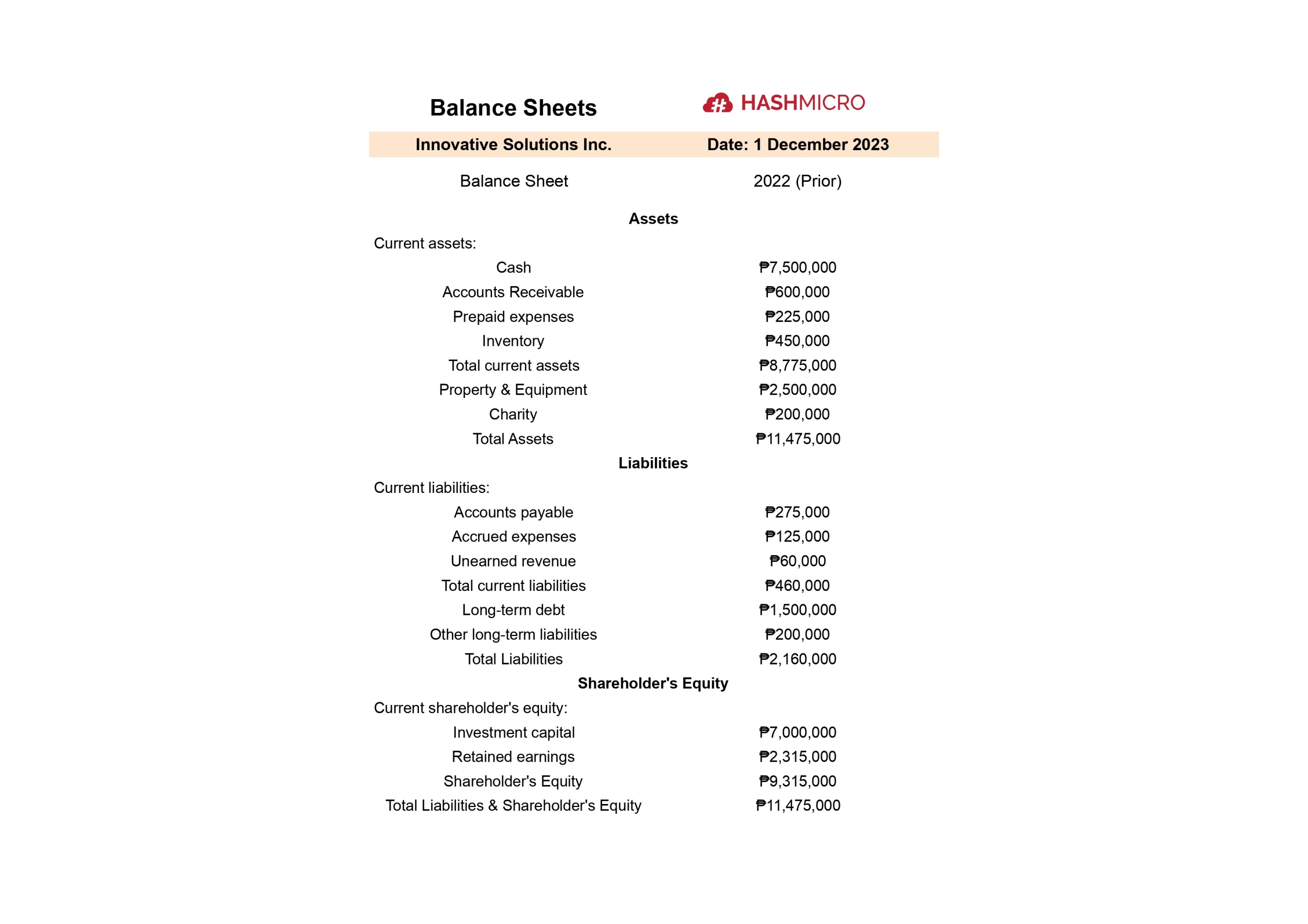
2. Balance Sheet Template 2
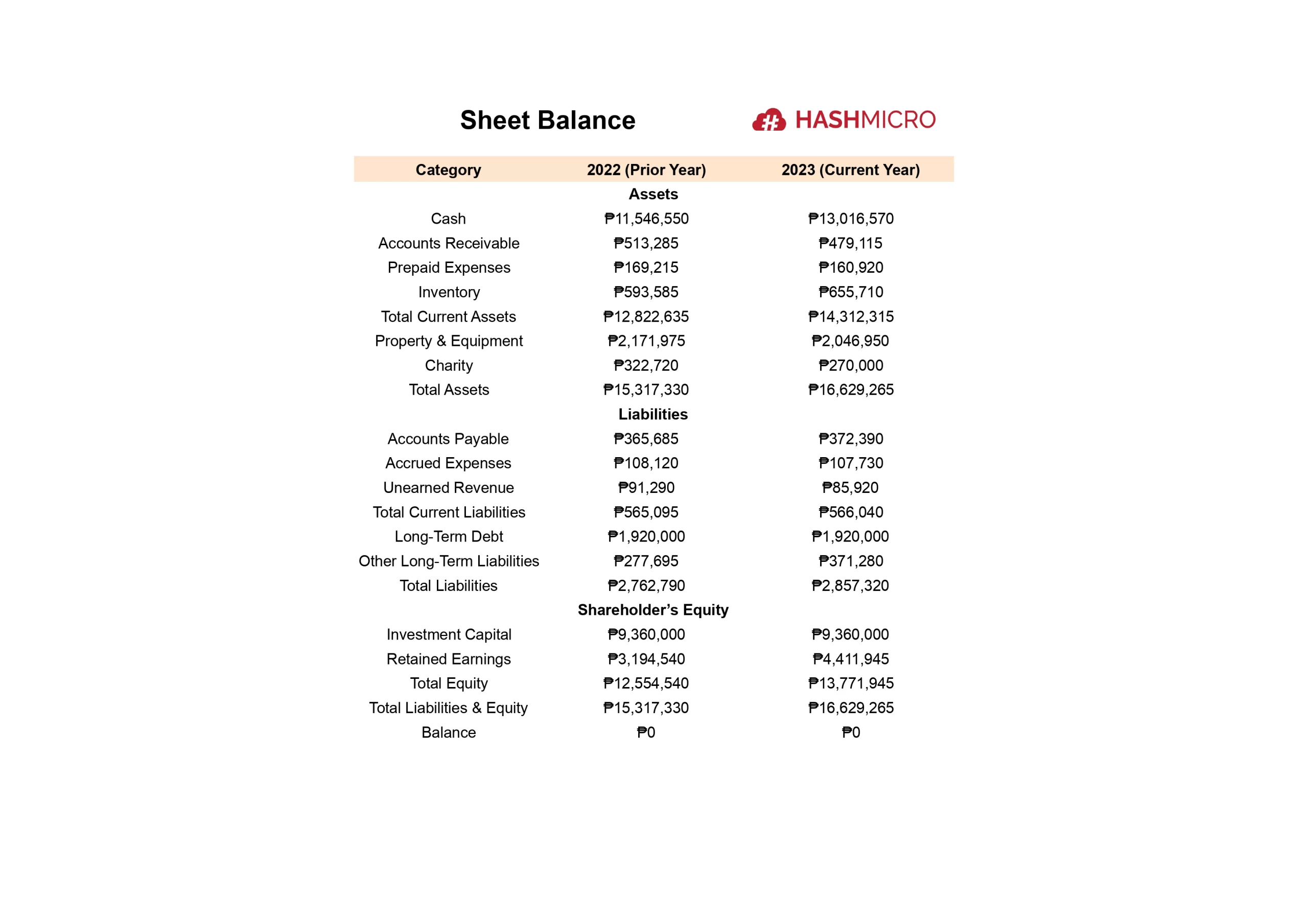
3. Balance Sheet Template 3
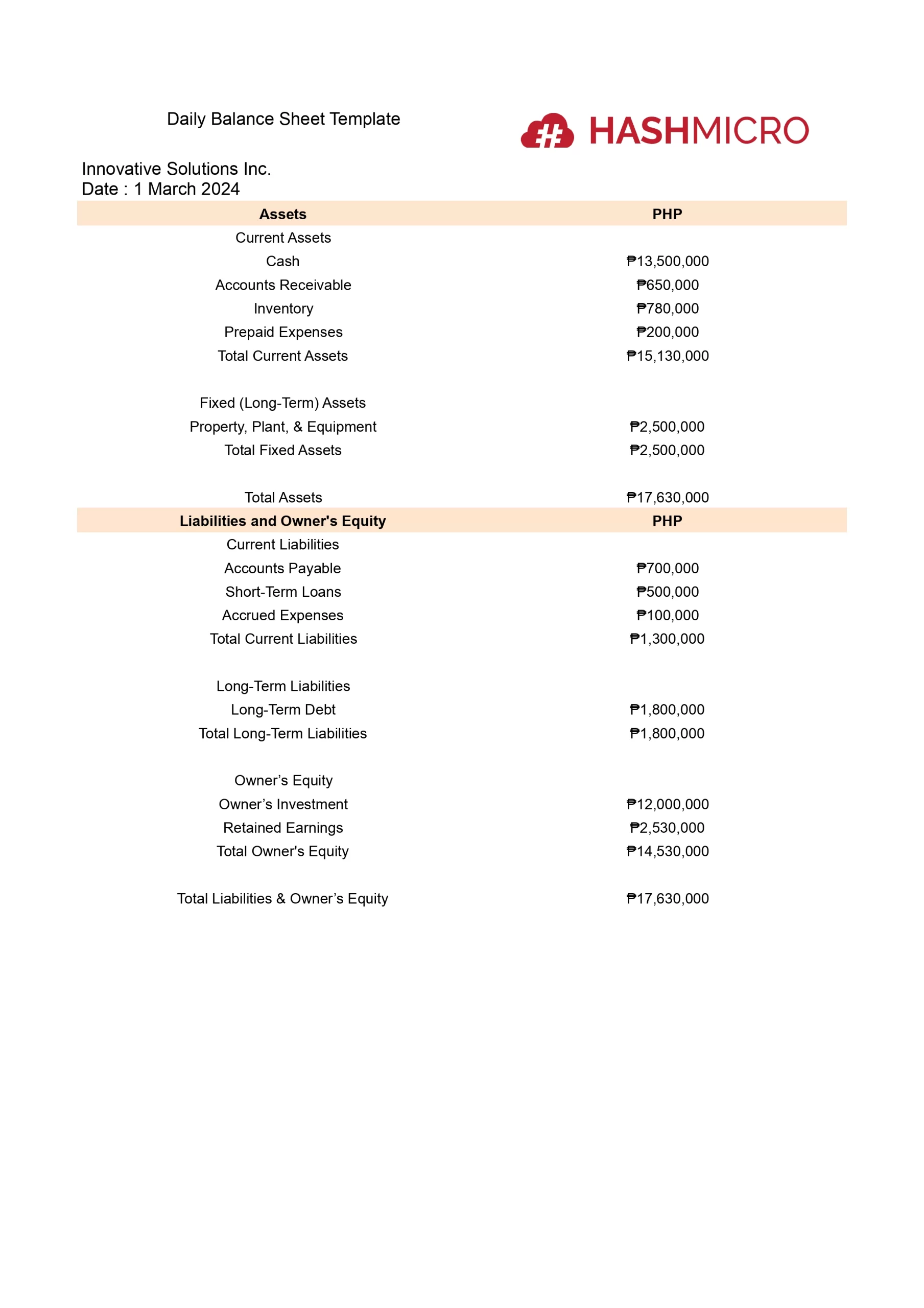
4. Balance Sheet Template 4
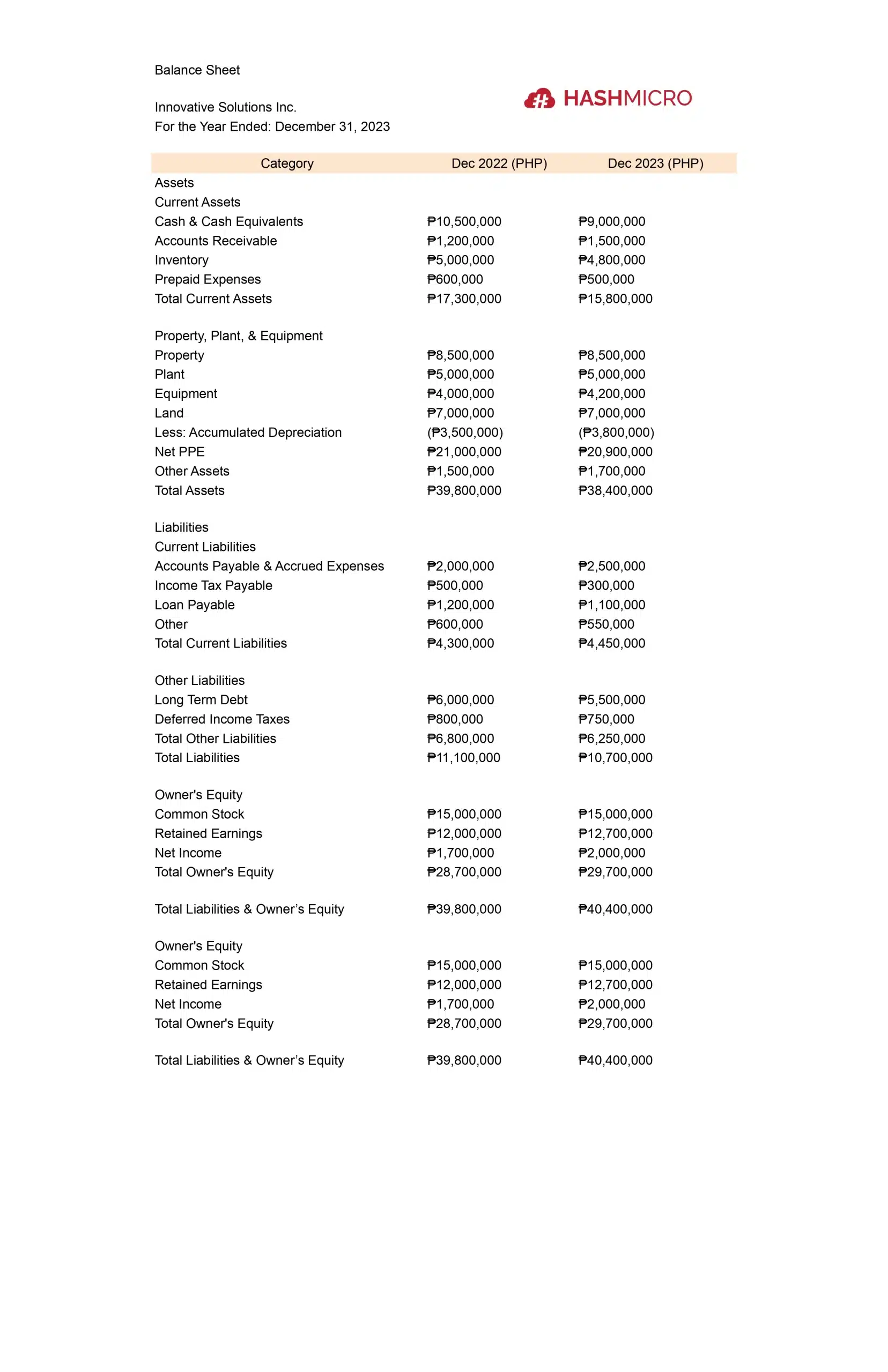
5. Balance Sheet Template 5
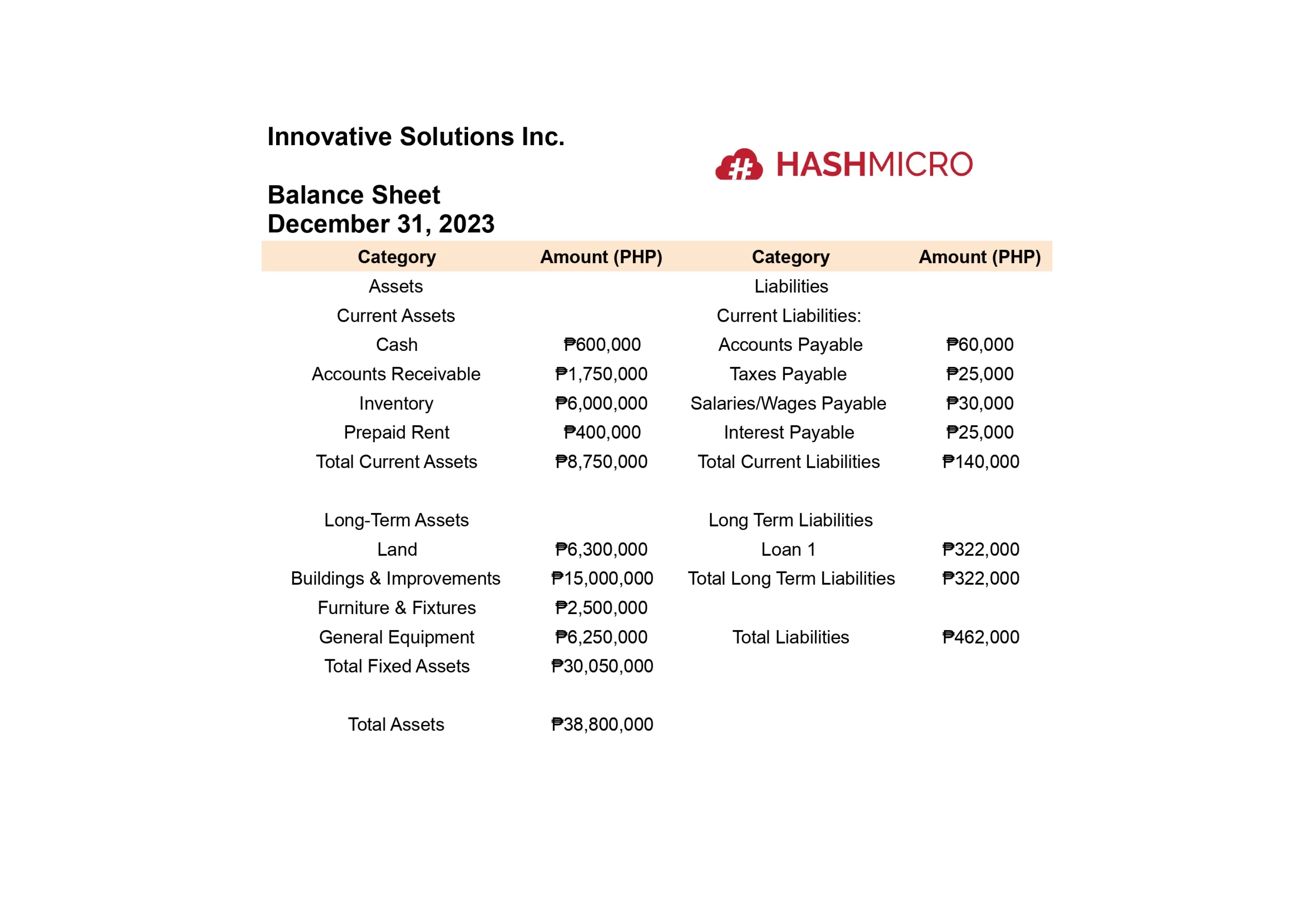
Conclusion
Understanding the key components of a balance sheet is crucial for businesses to assess their financial health and make informed decisions. By mastering assets, liabilities, and equity, companies can track their performance and ensure financial stability.
To streamline this process, using advanced accounting software like HashMicro can help businesses efficiently manage their balance sheets, automate data entry, and generate accurate financial reports.
For those looking to improve their financial management, consider requesting a free demo of HashMicro’s solutions today and experience how they can simplify your accounting processes.

Frequently Asked Questions About Balance Sheet
-
How do assets and liabilities relate on a balance sheet?
Assets should equal the sum of liabilities and shareholders’ equity. This balance is essential for the equation: Assets = Liabilities + Equity.
-
What tools can help create and manage balance sheets?
Many businesses use accounting software like HashMicro to automate and simplify the creation and management of balance sheets, ensuring accuracy and efficiency.
-
What types of liabilities appear on a balance sheet?
Liabilities are divided into current liabilities (e.g., accounts payable, short-term debt) and long-term liabilities (e.g., long-term loans, bonds payable).
{
“@context”: “https://schema.org”,
“@type”: “FAQPage”,
“mainEntity”: [{
“@type”: “Question”,
“name”: “How do assets and liabilities relate on a balance sheet?”,
“acceptedAnswer”: {
“@type”: “Answer”,
“text”: “Assets should equal the sum of liabilities and shareholders’ equity. This balance is essential for the equation: Assets = Liabilities + Equity.”
}
},{
“@type”: “Question”,
“name”: “What tools can help create and manage balance sheets?”,
“acceptedAnswer”: {
“@type”: “Answer”,
“text”: “Many businesses use accounting software like HashMicro to automate and simplify the creation and management of balance sheets, ensuring accuracy and efficiency.”
}
},{
“@type”: “Question”,
“name”: “What types of liabilities appear on a balance sheet?”,
“acceptedAnswer”: {
“@type”: “Answer”,
“text”: “Liabilities are divided into current liabilities (e.g., accounts payable, short-term debt) and long-term liabilities (e.g., long-term loans, bonds payable).”
}
}]
}



